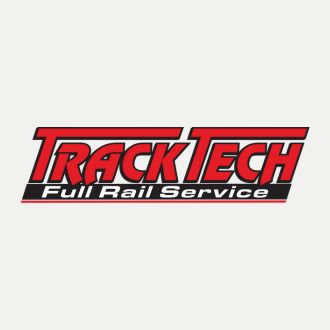Sustainability & Energy Efficiency Trends in the Railroad Industry
Introduction
Rail transport is widely recognized as the most energy-efficient and environmentally friendly mode of land transportation. It accounts for only about 1% of global transport emissions, despite carrying 7% of passenger traffic and 6% of freight tonnage worldwide. As nations strive to meet net-zero targets by 2050, the railroad industry is undergoing a profound transformation driven by electrification, renewable energy integration, alternative propulsion technologies, and digital optimization. This article takes a closer look at two of these trends, network electrification and alternative fuel powered trains, and the respective challenges and opportunities associated with them.
Electrification of Rail Networks
Rail electrification involves replacing diesel-powered locomotives with electric traction systems powered by overhead catenary wires or third-rail systems. Electric trains produce zero on-site emissions and are significantly more energy-efficient than diesel locomotives. Countries like Switzerland and Japan have nearly fully electrified their networks while Asia’s two most populous countries (India & China) exceed 70% in rail electrification. Supported by high-speed rail expansion, almost 60% of rail lines in the European Union are electrified whereas electrification in the U.S. and Canada is almost exclusively limited to passenger corridors accounting for a total of less than 1%.
| Region | Electrification Share | Key Drivers |
|---|---|---|
| North America | <1% | Climate goals, federal funding proposals |
| Europe | ~57% | EU Green Deal, TEN-T corridors |
| Asia | >70% (China, India) | National mandates, high-speed rail |
Electrification of rail is seen as a strategy for reducing greenhouse gas emissions and improving operational efficiency. By replacing diesel-powered locomotives with electric traction systems, rail operators could achieve environmental, economic, and performance benefits. Electric trains produce no tailpipe emissions and when powered by renewable energy sources, electrification can achieve near-zero lifecycle emissions. Electric traction systems are 20–30% more energy-efficient than diesel engines and electricity is generally cheaper than diesel fuel, especially when taking into account the potential integration of renewable energy from sources such as solar, wind and hydro, resulting in a reduction of operating costs and dependency on an often-times volatile fossil fuel market. Moreover, electric trains offer improved performance features such as faster acceleration, higher speeds (especially desirable for passenger service), greater reliability, and higher hauling capacity, improving freight efficiency on electrified routes.
Despite these benefits, rail electrification faces significant challenges that vary across geographies and markets. The single-biggest hurdle globally for widespread electrification are the enormous upfront capital investments associated with it including development and building the necessary infrastructure (overhead catenary systems, substations, transformers, signaling upgrades, etc.) and switching the rolling stock to electric. In the U.S. alone, full freight electrification is projected to cost $870 billion–$1.1 trillion, making this switch economically extremely challenging for private railroads. Existing infrastructure constrains such as clearance issues for double-stacked freight containers, bridge and tunnel modifications, and dense urban corridor complexities pose additional challenges along with operational disruptions retrofitting existing corridors would entail. Large-scale electrification would also significantly increase electricity consumption requiring major improvements and build-out of the grid capacity, energy supply, and renewable integration.
Electrifying rail networks offers undeniable sustainability benefits, but the challenges—high costs, infrastructure constraints, grid limitations, and market dynamics cannot be ignored. Strategic planning, policy support, and technological innovation are essential to overcome these barriers. In many regions, hybrid approaches combining electrification with hydrogen or battery solutions may provide a pragmatic path forward.
Hydrogen- & Battery-Powered Trains
As rail operators worldwide seek alternatives to diesel traction, hydrogen fuel cell trains and battery-electric trains have emerged as two leading technologies for achieving zero-emission rail transport. These solutions are particularly attractive for non-electrified routes, where installing overhead catenary systems is cost prohibitive. Like electrified rail, these technologies offer zero tailpipe emissions, improved energy efficiency, and compatibility with renewable energy sources.
Hydrogen-powered trains use hydrogen fuel cells to generate electricity onboard. Hydrogen reacts with oxygen in the fuel cell, producing electricity and emitting only water vapor as a byproduct. Thus, hydrogen trains emit no greenhouse gases or air pollutants during operation and when fueled with hydrogen produced using renewable electricity (green hydrogen), lifecycle emission approach net-zero. Hydrogen trains could provide a cost-effective alternative to conventional diesel trains for non-electrified routes without requiring extensive infrastructure upgrades. And compared to battery-powered trains, hydrogen trains offer greater range, making them better suitable for regional and intercity services. Hydrogen technology can be scaled across passenger and freight segments and falling costs of renewable energy and electrolyzers could make hydrogen trains increasingly competitive. Germany pioneered hydrogen trains in 2018, and other regions, including California, have launched pilot projects. While infrastructure and production costs remain challenges, partnerships with green hydrogen suppliers are looking for solutions for scalable adoption.
Despite their potential, hydrogen trains face significant technical, economic, and logistical challenges that must be resolved before widespread adoption. Production costs of green hydrogen are currently still 3–5 times higher than fossil-based hydrogen. Scaling up production requires massive investment in renewable energy and electrolyzer technology. Hydrogen fueling stations and distribution networks are virtually nonexistent and would require massive investments to build. Compared to battery-electric or direct-electric, hydrogen trains are less energy-efficient due to multiple conversion steps involved in the process (electricity → hydrogen → electricity) which result in higher energy losses compared to direct grid-powered trains. Also, hydrogen tanks take up significant space and add weight, reducing passenger or cargo capacity and liquefied hydrogen requires cryogenic storage, adding further complexity and cost.
| Feature | Hydrogen-Powered Trains | Battery-Powered Trains |
|---|---|---|
| Emissions | Zero tailpipe (water vapor only) | Zero tailpipe |
| Energy Source | Hydrogen fuel cells | Lithium-ion batteries |
| Best Use Case | Long non-electrified routes | Short/medium routes, yard switching |
| Range | Longer range than battery trains | Limited range; frequent charging needed |
| Refueling/Charging | Fast (similar to diesel turnaround) | Slower; requires charging stations |
| Infrastructure Needs | High (fueling stations, hydrogen supply chain) | Moderate (charging points, partial electrification) |
| Efficiency | Lower due to multiple conversion steps | Higher than hydrogen; closer to direct electrification |
| Noise Level | Low | Low |
| Challenges | High hydrogen production cost, safety, storage issues | Battery weight, range limitations, lifecycle disposal |
| Global Adoption | Germany, UK, France, California (pilot projects) | Japan, UK, U.S. (yard locomotives), Europe regional BMUs |
Battery-powered trains are gaining traction for short-haul and partially electrified routes where full electrification is not economically viable. These trains use advanced lithium-ion battery systems to store and deliver electricity to traction motors, offering zero tailpipe emissions and operational flexibility. Siemens’ Mireo Plus B fleet in Germany and U.S. pilot programs for freight yards highlight the growing role of battery-electric propulsion in rail decarbonization.
Battery trains operate using large onboard battery packs that supply electricity to electric traction motors. Charging can occur through plug-in charging stations at terminals, partial electrification (charging under overhead wires on certain sections), and regenerative braking, which recovers energy during deceleration. When charged with renewable electricity, they achieve near-zero lifecycle emissions. Battery trains avoid the need for continuous overhead catenary systems and are ideal for secondary lines and regional routes where electrification is cost prohibitive. Also, battery trains are quieter than diesel locomotives, reducing noise pollution in urban areas.
Current battery technology limits range to 50–150 km per charge, depending on train size and load, and frequent charging may disrupt operations on longer routes. Large battery packs add weight and reduce passenger or cargo capacity, and design optimization is needed to balance performance and efficiency. Like for hydrogen trains, investments would be needed to develop the necessary infrastructure for fast-charging stations and associated necessary upgrades to the electrical grid. Even with these in place, charging times can be longer than hydrogen refueling or diesel fueling.
Battery-powered trains present a promising solution for decarbonizing rail transport, especially on short and medium-distance routes where full electrification is not economically viable. Their key advantages - including zero emissions, lower infrastructure costs, operational flexibility, and reduced noise - make them a potential option for regional and commuter services. However, these benefits are tempered by challenges such as limited range, long charging times, heavy battery weight, and environmental concerns related to battery production and disposal. While technological advancements in battery chemistry and charging infrastructure are expected to mitigate these issues, battery-powered trains are best suited as part of a hybrid strategy, complementing electrification and hydrogen solutions rather than replacing them entirely.










